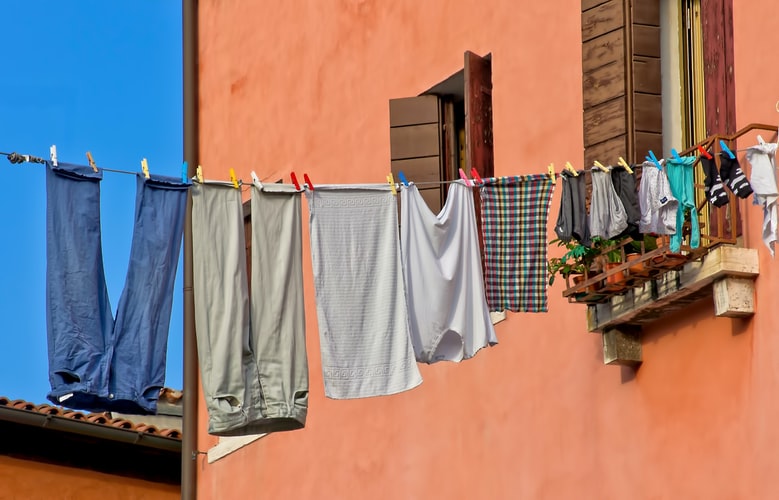
The social and environmental impact of the fashion industry.
By Jessica Sofizade
The growth of the fast-fashion industry has had a profound effect on the environment. The damage it inflicts is multifaceted, including: the huge amount of water it takes to create a single item[1]; the type of material used and its effect on the environment; the carbon footprint to transport garments globally; harmful microfibres[2]; the use of chemicals; and general waste when unwanted items are thrown away (85% of textiles end up in landfills or are incinerated when most of these materials could be reused [1]).
“The fashion industry is the second-most-polluting industry—coming in right behind big oil—according to the UN. The fashion industry not only produces 10% of global carbon emissions, but also contributes 20% of waste water production.”[3]
What is fast fashion?
Fast fashion is cheap, trendy clothing which tries to get the latest styles on the market at incredible speed in order to meet consumer demand. This is made possible thanks to new technology which makes clothes quicker, cheaper and easier to produce; globalisation, with many fashion labels selling clothes all over the world; online fashion retail; and factories (or sweatshops) which enable corporations to outsource their production to places with low welfare standards for extremely cheap production.[4]
Compared to even 20 years ago, consumers are buying approximately 60% more clothing than they would previously.[5] Despite this, clothing items are kept only half as long.[6] This has been amplified by the fact that garments are cheaper, the quality is lower, and new styles are released continuously – some low-cost shops offer new designs every week [5]. The over-production, over-consumption and increasing amount of waste which are some of the direct results of fast fashion have enormous consequences on the environment.

There is also a significant human cost of these garments. “Fast fashion is also linked to dangerous working conditions due to unsafe processes and hazardous substances used in production. Costs reductions and time pressures are often imposed on all parts of the supply chain, leading to workers suffering from long working hours and low pay.” [5]
The coronavirus pandemic has thrown some of these social injustices into the spotlight. In the wake of the pandemic, many global fashion brands (such as Primark and Matalan) cancelled or suspended £2.4 billion of existing orders.[7] The BGMEA estimates that 2.28 million workers have been affected due to the pandemic.[8]
In Bangladesh, factory owners feel powerless in the face of these huge retailers, especially since they will need to work with these brands again once things return to normal. Factories often take all the risk – they need to pay costs upfront, such as raw materials and labour, and can only raise invoices once the clothes are delivered. Since many brands have cancelled or postponed the delivery of orders, “nobody in Bangladesh gets paid”.[7]
Bangladeshi garment makers are currently suffering acutely as a direct result. Many have lost their jobs due to coronavirus (with no compensation or benefit), and in addition have not been paid for previous work due to cancelled or postponed orders. Some are fighting to survive on a bag of borrowed rice.[9] In May, those who were able to return to work put their health at risk “in cramped conditions where mask-wearing and physical distancing are not enforced”.[10]
What is being done?

- Fashion Stakeholders signed The Fashion Industry Charter for Climate Action which aims to achieve net-zero emissions by 2050[11]
- Green Fashion Week supports sustainable fashion
- In January 2020 Italian Vogue contained no photos in order to reduce its carbon emissions. “When describing what goes into producing each monthly issue of Vogue, Emanuele Farneti, editor-in-chief of Vogue Italia, said: ‘One hundred and fifty people involved. About twenty flights and a dozen or so train journeys. Lights switched on for at least ten hours non-stop, partly powered by gasoline-fueled generators. Food waste from catering services. Plastic to wrap the garments. Electricity to recharge phones and cameras.’”[12]
- The UN Alliance for Sustainable Fashion aims to contribute to the Sustainable Development Goals through coordinated action in the fashion sector. It includes social issues (such as working conditions and remuneration), and environmental issues (such as water pollution and greenhouse gas emissions).[13]
- Better Cotton Initiative[14] and Global Organic Textile Standard[15] aim to improve clothing materials
- Several organisations strive for a fair and sustainable global garment supply chain, and aim to improve working conditions, such as the Clean Clothes Campaign,[16] the Fair Fashion Think Tank,[17] and the Dirty Fashion campaign.[18]
What can we do to minimise the damaging effects our clothes have on the environment?
Many public surveys have shown that we often have clothes in our wardrobes that we hardly every wear. This could be because they are no longer in style or no longer fit, for example. One survey suggested that “nearly half of the clothes in the average UK person’s wardrobe are never worn”.[19]
One easy act we can all take, therefore, is to invest in higher quality clothing which we wear more often and keep for longer. In the UK, continuing to actively wear a garment for just nine months longer could diminish its environmental impacts by 20–30%. [15] Cheap clothing also often doesn’t survive as long, so consider quality over quantity. Some people haven’t bought new clothes for a decade, preferring to repair old clothes, buy second-hand, or make their own![20]
Another fun way to get a new wardrobe is to swap clothes with your friends. Organise a (socially distanced) clothes-swap and turn it into a fun event!

For any clothes which you no longer want to keep – don’t throw them in the bin. Recycle, upcycle, reuse, donate or refashion them, and reduce their harmful impact on the environment.
Before buying new clothes, check if the manufacturers used sustainable criteria to make the clothing.[21] Moreover, buy only what you need. In some countries, 40 % of purchased clothing is never used.[22] Another option is to buy second-hand clothing from charity shops or on online apps (e.g. Vinted).
Finally, think about your laundry — wash full loads, use a lower temperature when possible, and use non-abrasive detergents.
By thinking about the clothes we buy and their lifespan, we can play a significant role in reducing the harmful impact of the fashion industry, and encourage more responsible, environmentally friendly, and sustainably sourced garments.
P.S. Check out this article, which is full of useful information on what clothes are made of:
Clothing Fabrics: How Sustainable Is Your Wardrobe? – beeco
By Jessica Sofizade
Find Kairos Europe on Facebook
The views and opinions expressed in this article are those of the authors and do not necessarily reflect the official positions of Kairos Europe, its partners or their employees.
[1]10,000 litres of water is required to just grow the one kilo of cotton needed for the pair of jeans. In comparison, one person would take 10 years to drink 10,000 litres of water https://unfccc.int/news/un-helps-fashion-industry-shift-to-low-carbon
[2] One washload of polyester clothes can release 700,000 microplastic fibres into the environment. It is estimated that half a million tonnes of these microfibres end up in the sea each year. Polyester, made from fossil fuels, is non-biodegradable. Microfibres from synthetics are a major contributor to microplastic pollution – a 2019 Bangor University survey of UK rivers, reservoirs and lakes found micro-plastic pollution at all locations tested – https://www.theguardian.com/fashion/2019/jun/23/five-ways-fashion-damages-the-planet
[3] https://www.un.org/africarenewal/magazine/december-2019-march-2020/battling-damaging-effects-%E2%80%98fast-fashion%E2%80%99#:~:text=The%20fashion%20industry%20not%20only,Framework%20Convention%20on%20Climate%20Change. – the fashion industry consumes more energy than the aviation and shipping industry combined
[4] https://goodonyou.eco/what-is-fast-fashion/
[5] https://www.worldbank.org/en/news/feature/2019/09/23/costo-moda-medio-ambiente
[6] http://www.unece.org/info/media/presscurrent-press-h/forestry-and-timber/2018/un-alliance-aims-to-put-fashion-on-path-to-sustainability/doc.html
[7] https://www.theguardian.com/global-development/2020/apr/02/fashion-brands-cancellations-of-24bn-orders-catastrophic-for-bangladesh
[9] https://www.theguardian.com/global-development/2020/jun/20/we-have-no-money-for-food-or-rent-plight-of-bangladeshi-garment-makers
[10] https://www.theguardian.com/global-development/2020/may/11/bangladesh-garment-factories-reopen-despite-coronavirus-threat-to-workers
[11] See the charter here: https://unfccc.int/sites/default/files/resource/Industry%20Charter%20%20Fashion%20and%20Climate%20Action%20-%2022102018.pdf
[12] https://environmentjournal.online/articles/new-vogue-magazine-features-no-photos-to-improve-carbon-footprint/
[13] https://unfashionalliance.org/
[14] https://bettercotton.org/about-bci/
[15] https://www.global-standard.org/the-standard/general-description.html
[16] https://cleanclothes.org/
[17] https://www.fairfashionthinktank.org/
[18] https://changingmarkets.org/portfolio/dirty-fashion/
[19] https://www.bbc.com/future/article/20200310-sustainable-fashion-how-to-buy-clothes-good-for-the-climate#:~:text=Fashion%20accounts%20for%20around%2010,wardrobe%20has%20on%20the%20climate.&text=The%20fashion%20industry%20accounts%20for,and%20nearly%2020%25%20of%20wastewater.
[20] https://www.theguardian.com/fashion/2020/mar/12/i-wear-my-grandads-old-boxers-meet-the-people-who-havent-bought-clothes-for-a-decade
[21] For example, BAM (bamboo clothing) is attempting to become impact positive: https://bambooclothing.co.uk/becoming-impact-positive/, and some companies try to turn products such as plastic bottles into items of clothing, such as Batoko’s recycled plastic swimwear: https://www.batoko.com/
[22] https://www.worldbank.org/en/news/feature/2019/09/23/costo-moda-medio-ambiente

Great article. I found it very interesting.
Thank you!
A recent interesting and important article about the role of the fashion industry in forced labour camps can be found here: https://www.theguardian.com/global-development/2020/jul/23/virtually-entire-fashion-industry-complicit-in-uighur-forced-labour-say-rights-groups-china
thanks you so much